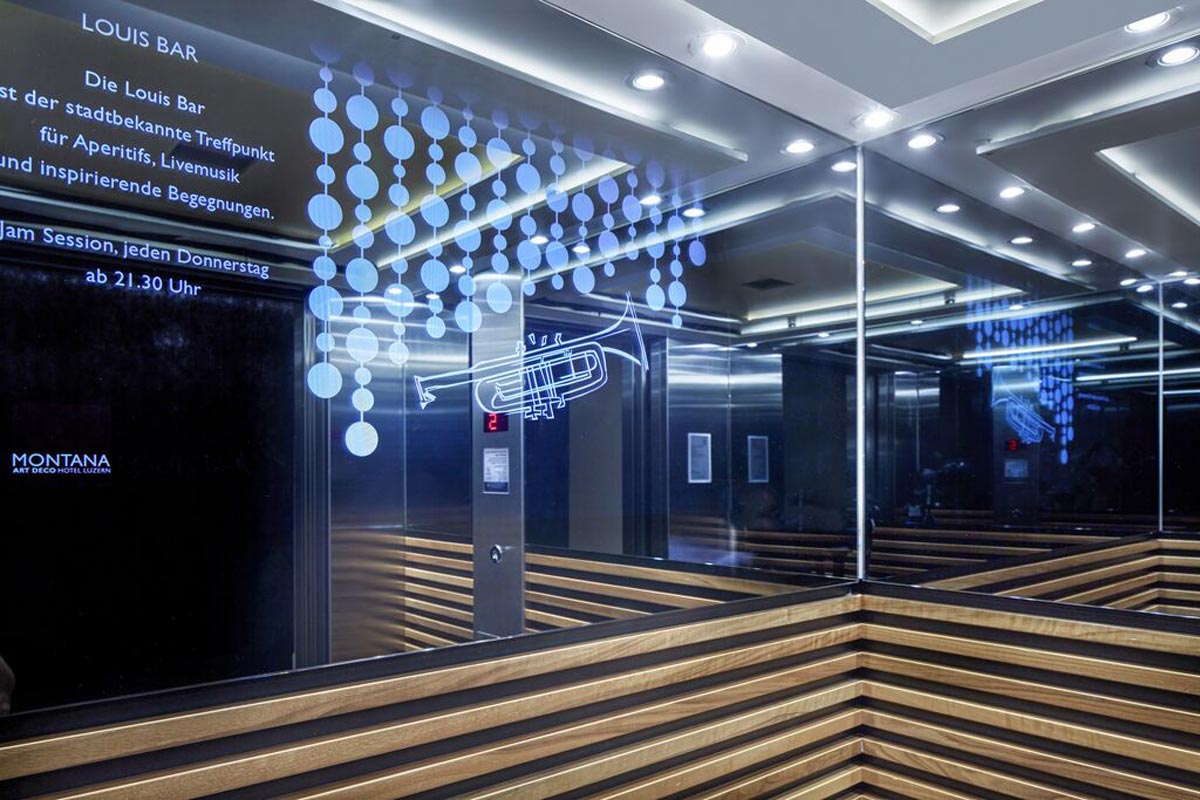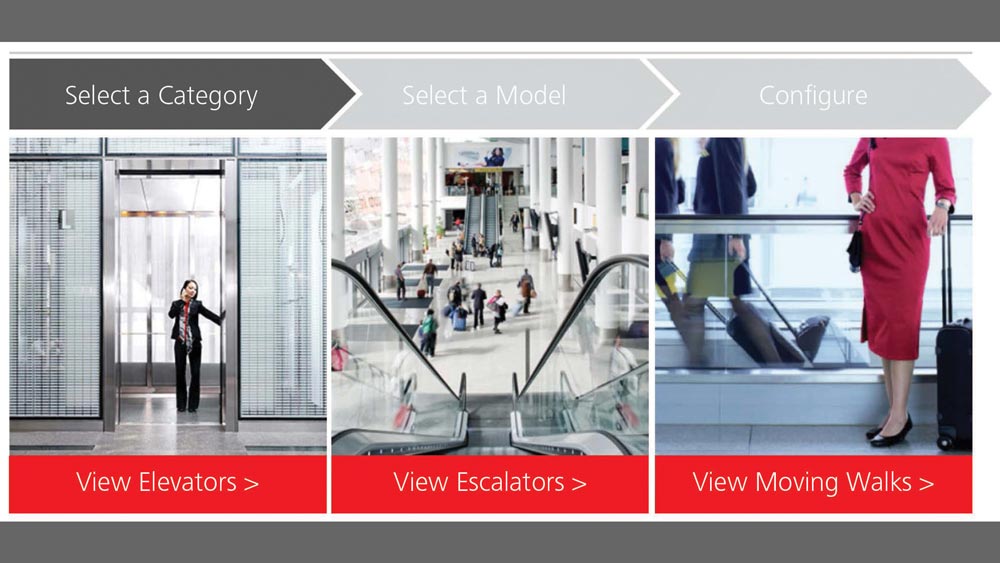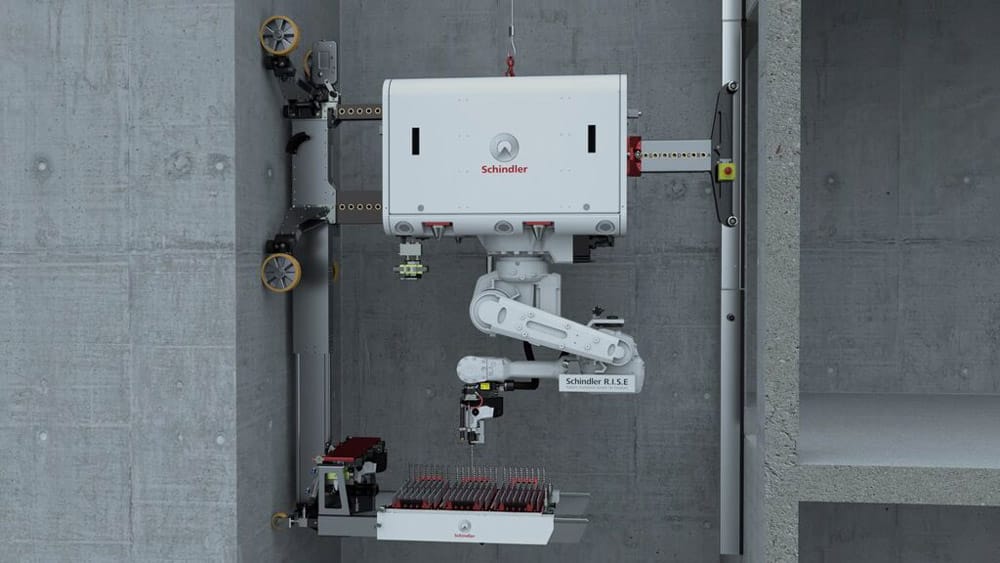Between the Democratization of Knowledge and Elevator Planning
Feb 1, 2022

Schindler Head of Operations discusses digitalization in practice and his role.
images courtesy of Schindler
Your author (USB) recently spoke with Dr. Christian Schulz (CS), head of operations at Schindler, based in Ebikon, Switzerland, about accelerating construction processes and ensuring quality through digitalization along the entire value chain.

USB: Dr. Schulz, thank you for taking the time to present and describe current developments at your company and in the industry to ELEVATOR WORLD readers. Who is the person I’m talking to and how did you get where you are?
CS: I have a degree in engineering from Germany. I started my professional career at the German Research Center for Artificial Intelligence (Deutsches Forschungszentrum für Künstliche Intelligenz DFKI), then commenced my work in industry at ABB in Germany. In 2003, I started at Schindler in Germany. From 2009 to 2014, I was managing director of the C. Haushahn Group in Germany, which is a part of the Schindler Group. I then became head of Service and Modernization for the Schindler Group in Switzerland. I’ve held the position of head of operations since 2017. Schindler builds elevators for passengers and goods, escalators and moving walks worldwide, transporting more than 1.5 billion people per year.
USB: How has your time at Haushahn shaped this company?
CS: At that time, Schindler bought many smaller companies and transferred them to Haushahn. Schindler deliberately differentiated Haushahn. Some customers appreciate the “Big 4”; some prefer the medium-sized companies. At medium-sized companies, proximity to contact persons is cultivated just as proximity to customers and products. Haushahn offers a real alternative to the “Big 4” and has, meanwhile, risen to number five in Germany. This “medium-sized” corporate culture has now been copied by Schindler in other countries because of its great success. In China, for example, one such subsidiary also uses the Haushahn logo and even a similar-sounding company name.
USB: In general, what is the role of a Head of Operations?
CS: My main task is to understand markets and customers and translate that into products and services. In the broadest sense, this is product management. As Schindler has a matrix structure, the Head of Operations is the link between countries/regions and the classic functional areas. The team has around 250 employees who handle this task. Counterparts can be found in all countries based in their respective focus regions.
USB: What does that mean in terms of your day-to-day work?
CS: I communicate a lot in both directions. Early in the morning, due to the time difference with China, I am at my desk finding out what customers want and how our products are received. I actively involve the IT, supply chain and R&D departments. My day ends with talks with colleagues in North and South America.
USB: Could you please provide a specific example?
CS: Most recently, I spoke with eight German key customers, including architects and operators. The focus was on how they see the market now and in the future. In this way, I detect changes among customers, which we then use to develop new products within the group. This is how, for example, Schindler R.I.S.E, our assembly robot, and our digital services came into existence. They help our customers achieve greater success in their business.
USB: In turn, what shaped Schindler?
CS: Within the last two years, Schindler has completely renewed its product range worldwide. Customers are increasingly interested in the entire construction process, which they want to accelerate. As a result, Schindler no longer offers only elevators but also, for example, during the construction process, the Schindler CLIMB Lift, which transports building materials and craftspeople. One of its benefits is that it is enclosed, so it protects people and materials from wind and weather, and, in turn, protects the environment from construction noise. In addition, it travels at a higher speed than a conventional construction elevator.

USB: The other facet of modernization you mentioned was digitalization along the value chain. What are the benefits?
CS: The fundamental requirement is data consistency, as we are already implementing it in Schindler 1000 and Schindler 3000 elevators. All data “migrate” via an on-site data interface to the machines and back to production. For this purpose, a product configuration software is used, which is also used in the automotive industry. To return to Schindler R.I.S.E, documentation of the assembly is provided electronically. The elevator is delivered to the construction site in boxes, and the boxes are provided with QR codes that can be accessed online. Subsequent settings are also made online using a dedicated software tool. This reduces elevator installation time by 10-15% with improved quality.
“The most important data are available in real time, always and everywhere.”
USB: The first thing that comes to mind when customers think of digitalization is, of course, maintenance.
CS: Of course, all active elevators today deliver their data to the cloud. Data can be retrieved there, but direct action on the elevators is also possible. Schindler Ahead offers predictive maintenance and electronic monitoring. The most important data are available in real time, always and everywhere. The focus here is on quality assurance: Problems will be detected. The service technician sent to the site already knows the problem. On his cell phone, it is suggested what he could do on-site to eliminate the problem so he will get it right the first time.
USB: What does a shortage of skilled professionals have to do with digitalization?
CS: We are creating an electronic elevator knowledge base at Schindler. Employees’ experiences are collected and automatically translated into all languages used in the group. If, for example, an error is reported in the control system, the employee receives information about the error and the possible solution from the app. This is also for third-party systems. This democratization of knowledge is particularly important for young employees. They first look online for a solution: “Why isn’t the coffee machine working?” An expert system doesn’t solve the problem, but it collects the knowledge and experience of experts and passes it on to the next generation of employees.
USB: Many expert systems have failed before. How is Schindler doing better?
CS: Employees feed the system. The employees on-site use the system. If no solution is found in the database, experts within the group become involved to close the knowledge gap. Depending on the time passed, experts in the respective countries are involved first, followed by experts at headquarters. The solution is, in turn, evaluated by the system users. The central expert group also takes care of editing the content. Retired employees, among others, are used for this purpose. In this way, they remain connected with the company; in return, they work a certain number of hours per month on solving such problems in the system.
USB: You have covered the group side in terms of digitizing processes. What do you offer to the customers’ “link,” the planners?
CS: I am not referring here to the highly specialized and qualified elevator planners for spectacular buildings, but to the architects and building services engineers for the straightforward buildings they plan perhaps two, three or four times a year. In addition, standards are constantly changing. The Schindler Plan & Design Tool planning software optimizes the entire planning process by enabling this target group, in particular, to plan an elevator completely. For processing, the data are loaded from and into the cloud. High-resolution graphics, for example, enable a preview of the car interior. The data are then transferred directly into the quote. Customers are also developing an even greater digital affinity.

USB: How does building information modeling (BIM) fit into the planning process?
CS: Planning is further improved by BIM integration. We deliver BIM-enabled data from the tool for each product directly to the architect. We work directly with large customers. So far, these integrated models are still primarily found in large construction projects.
USB: Are there also regional focal points in digital planning incorporating BIM?
CS: Indeed, the Anglo-Saxon countries are leading the way; I am also counting Hong Kong, as well as Australia and New Zealand. However, the U.S. is more open to this than perhaps the rest of the world. One reason is that there is still no finalized standardization, but there are initial technical rules from the Chartered Institution of Building Services Engineers in Great Britain and now also from Verein Deutscher Ingenieure in Germany. The still-existing different requirements for data formats and their contents lead to the fact that, at present, not even our large competitors are compatible. Rather, each company pursues large customers alone rather than with company-internal approaches. International, or at least European, standardization must therefore be quickly driven forward.
USB: At the end of the chain, digitalization also reaches the users in the form of smart respectively intelligent buildings and elevators.
CS: With Schindler PORT and MyPORT, we offer a comprehensive digital system to facilitate and respectively optimize mobility in buildings and increase user safety. Application projects include, for example, the Future Living® neighborhood in Berlin, where Schindler was a operation and development partner (EW Europe, July-August 2021).
USB: What about the most valuable asset of people today: information?
CS: Our digital communication solutions in the car help inform users. They replace the information letter affixed to the elevator, such as “The gutters will be cleaned next week,” with a screen display that can, of course, also show advertising or other information. Depending on who is using the elevator, the screen can show the weather or the stock market. Or, in the morning, on the way to the parking garage, the system already shows in Google Maps where the traffic jam is on the way to work and how to get around it. Property managers can change the information easily and quickly and do not have to be on-site so often, which is good for sustainability. The ride is turned into an experience; contact with users is strengthened. The elevator becomes an individualized communication platform and, thus, increases effectiveness by optimizing wait and travel times.

USB: Let’s look further into the future. Can we expect new digital products and/or services from Schindler, e.g., the use of AI?
CS: In my opinion, the topic of sustainability will gain importance. Future elevator controls will address this by adapting their controlling logics to current building needs. If a building is half empty, it may not make sense for two people with different destination floors to be assigned different elevators. It is more sustainable to serve both people with the same elevator, even if the second person has a slightly longer trip. Here, we already use some rudimentary AI in the control system for optimization purposes.
USB: What other approaches to sustainability do you see?
CS: We will need to improve sustainability in terms of the management of buildings. This also includes conducting services remotely, thereby reducing the carbon footprint. Large customers already want to know not only the energy consumption of the elevators, but also the carbon footprint of our maintenance work to determine the carbon footprint of their buildings.
USB: Does this apply to new as well as existing buildings?
CS: One of the challenges relates to the long period of use of our buildings and the associated advanced age of the technical equipment. Here, modernization of equipment such as elevators provides further potential for energy savings.
USB: What’s to come in terms of digitalization?
CS: The revolution in elevator technology will be the digitalization of mechanical safety components such as brakes and overspeed governors. Anchoring this in legislation and standardization will be a long process.
Get more of Elevator World. Sign up for our free e-newsletter.









